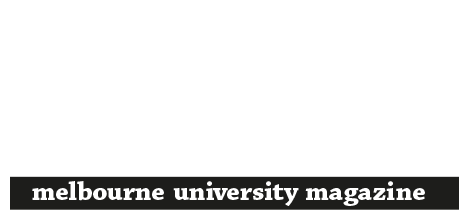Dr Who synth offers vintage sounds
BY EMMA BRIMFIELD-WALSH
When the Melbourne Conservatorium of Music (MCM) announced it would host a special performance of the ‘Doctor Who’ synthesiser (EMI Synthi 100) last year, it’s little wonder the event sold out within minutes.
From the whoosh of the TARDIS to the robotic war cry of the Daleks, Doctor Who is well and truly embedded into the hearts and minds of generations of viewers. And while Doctors have come and gone during the last 50 years, one thing has remained constant: the theme tune.
Today, the Doctor Who theme is regarded as a groundbreaking masterpiece of early electronic music and remains one of the most instantly recognisable television themes of all time.
However, for MCM Senior Technician, Leslie Craythorn, Doctor Who’s popularity is a bit of a sore point. “There’s about 20 different versions of the theme tune,” he said. “Only one was ever played on the Synthi 100.”
“The most popular thing is not always the real thing,” said Leslie. “When the Synthi 100 was released on the market there was purpose in its design. There was a real mission for the composer. Unfortunately it got derailed because of the popularisation of Doctor Who.”
For the past year Leslie has dedicated his time to restoring the Synthi 100 to its former glory, but his relationship with the instrument goes back much further than that.
In 1975 the Synthi was delivered to the University’s Faculty of Music. Soon after, Leslie was employed to work within the Faculty of Music’s (now MCM) Electronic Music Studio. “The first thing I did when I got the key to the studio was walk through to the Synthi 100,” said Leslie. “I was overwhelmed with joy. I remember thinking it was the best day of my life! I turned it on, stood there and thought ‘where do I start?’
“There wasn’t a training manual. Bit by bit I worked it out,” he said. “By the end of the week the lecturer expected me to know all about it.” Leslie laughed recalling this. To have basic knowledge of the instrument, you need to spend three months with it. To be a master, two years of solid study is required.
Throughout the 1970s the instrument was utilised by students and lecturers at the MCM, but by 1984 it was relegated to the storage room.

Leslie Craythorn at work in 1975.
Coming back into contact with the instrument over 30 years later, the awe and inspiration has not waned for Leslie. In fact he believes that the true reason for the renewed interested in analog technology is due to the creative freedom it enables.
“We’re looking at decades of people who’ve been playing with a keyboard,” he explained. “You’ve only got eight tones and controlled semi-tones. You can press the keys, but five second later its all over. Creative experience: End.”
“In my view, people want to do things their own way. I’m preaching something that I knew about back then, but now I feel much more strongly about it. It’s time we pulled it all out again and started experimenting beyond the western music scale.”
With the opening of the new Brian Brown Recording Studio on the Southbank campus, Leslie’s vision is likely to be realised. The Studio will house the Synthi 100 along with other vintage synthesisers from the University’s collection. And for the first time since 1984, students will be able to utilise the equipment as part of their music studies.



